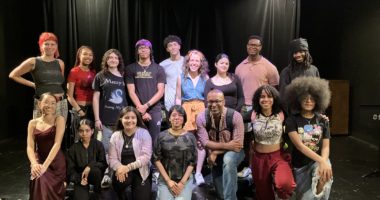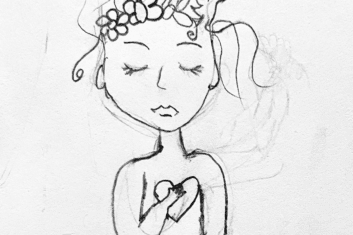The work we’ve been doing in our Teaching Artist Project workshops so far has me thinking more and more about the tricky nature of teaching for social justice – when should it be implicit and when should it be explicit? This question also conjures up, for me, questions about the term ‘Teaching Artist’ itself, and leads me to lean more towards a term recently brought to my attention: Citizen Artist.


As it was defined for me by Eric Booth, the father of the Teaching Artist profession, a Citizen Artist is one who seeks to live through art, and therefore many of their interactions with peers and community become teachable moments through art practices. A Citizen Artist is always living artfully and as a model of a socially empathetic society that can change the world by helping others access the mindset that creativity teaches.This necessitates crafting and carrying new worlds with us into the classroom, ones that will hopefully resonate with students as well. Being able to redefine the idea of citizen artist as being a citizen of your own ideal world could be quite a powerful and cohesive force in a classroom. But, the word citizen comes with so much baggage in today’s world, and indeed will carry so many different connotations for our co-workers and students going forward that we would be remiss to not keep ourselves constantly aware of these contexts. However, reorienting the context to a more universal, and certainly awesome, goal of creating and representing your own, more empathetic and creative world, and what it means to be a citizen of that world, is one I can see being a very powerful tool for unification in a classroom.


Eric Booth also asks for authenticity and transparency from Citizen Artists, in order to create “safe but charged” classroom spaces where important work can be done, and illuminating discussions had, without anyone feeling embarrassed or attacked. This is of course difficult to achieve, and something that must be constantly adjusted for, but when it happens – when it all comes into balance – I imagine a great surge of engaged, intrinsically motivated, learning will follow. It seems to me that the most useful personal tool for creating, and maintaining, that safe and charged balance is to bring the students in on what it means to be a citizen of your ideal world. We must enrich them on how to change their current worlds, to break out of negative or harmful paradigms and set awesome goals to carry them into blazing futures.


Allowing students to inform the world of the classroom, to participate in its construction and care, will help them to create supportive bonds with their peers and hopefully lead to an inherently safe and charged classroom. But it is still our responsibility to provide them with the model for being a citizen in this new world, which harks back to Booth’s faith in the power of authenticity. In order to engage our students and draw them into this new world, we must be transparent. We cannot condescend. We must know each student, their individual needs and strengths, and learn to adapt to accommodate them. Because, ultimately, the kind of world we seek, the one we claim to represent, is one where all citizens are empathetic to the unique perspectives of others. We listen, we learn, we grow. We admit our mistakes and keep our promises. We are tenacious. We are loving. We are citizen artists.
-Mikayla Morin, TAP Trainee 2017-18





